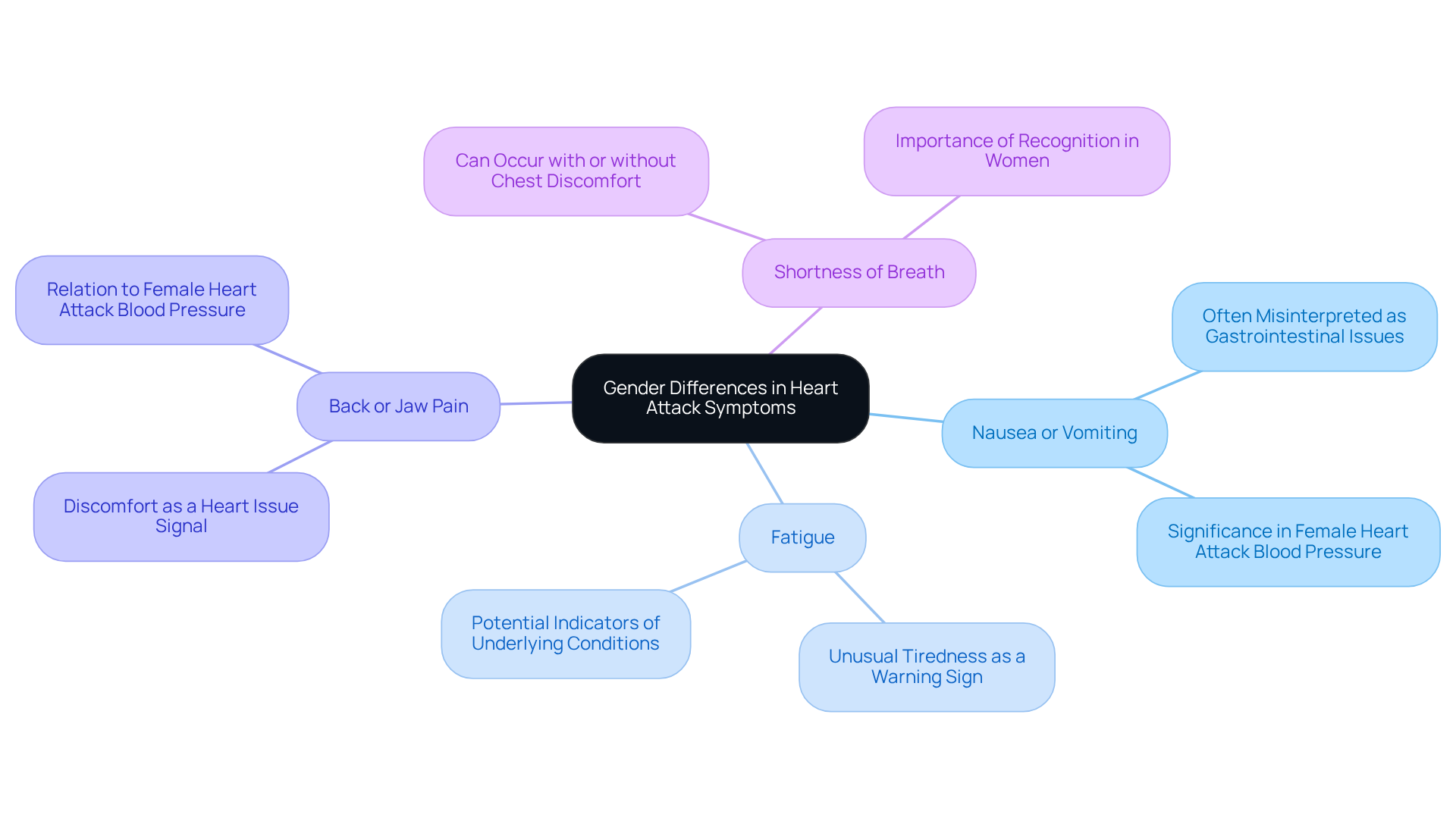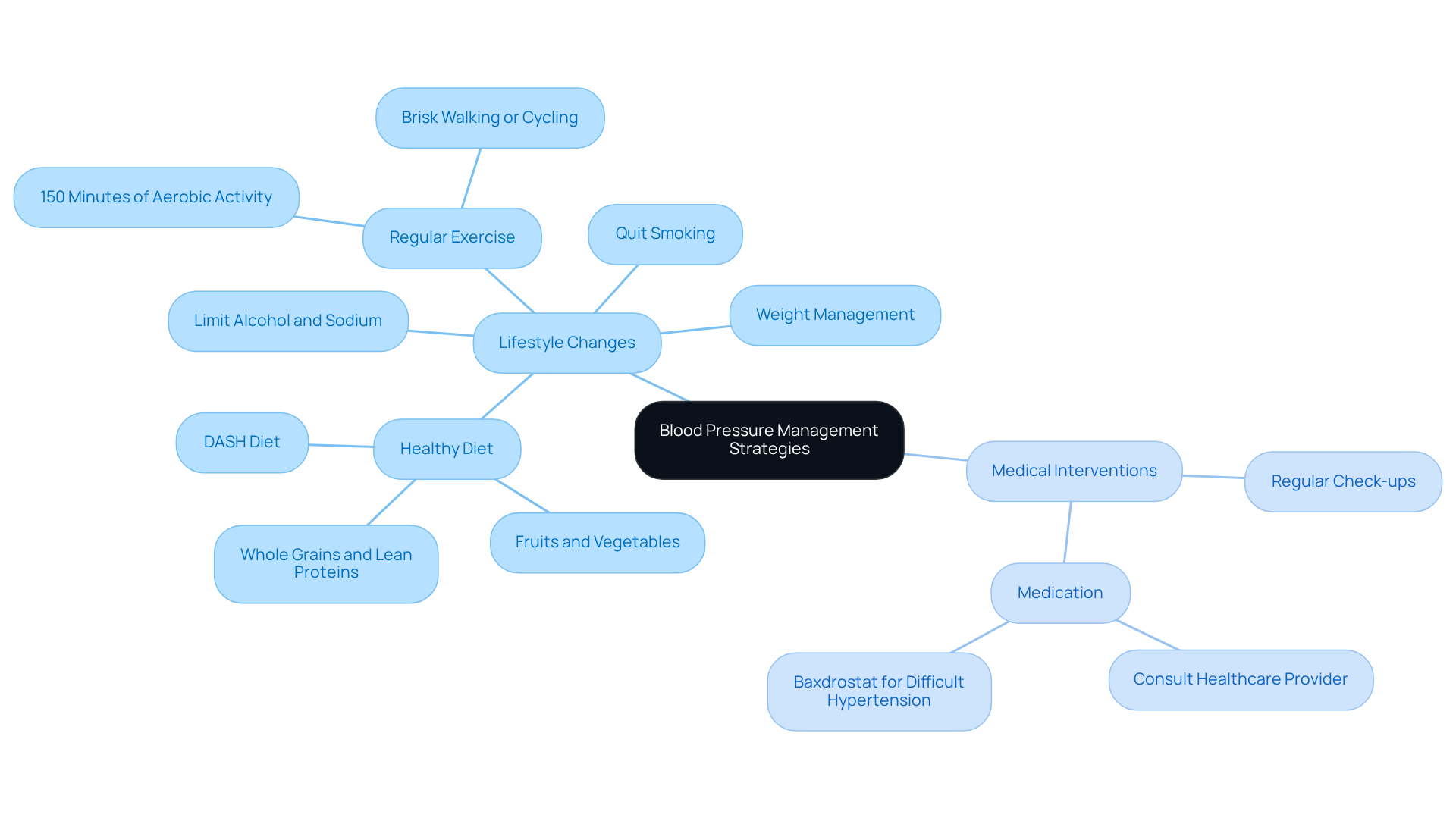


Understanding the risks of heart attacks in women is crucial, especially as blood pressure plays a significant role in this matter. Many women experience atypical symptoms, such as fatigue and back pain, which can lead to underdiagnosis and increased anxiety about their health. It's important to recognize these signs and understand that you're not alone in your concerns.
Managing hypertension can greatly improve health outcomes for women at risk of heart attacks. Simple lifestyle changes, such as:
can make a world of difference. Additionally, medical interventions may be necessary, and seeking help from healthcare professionals can provide the support you need.
If you're feeling overwhelmed or uncertain about your health, remember that there are resources available to help you. Don't hesitate to reach out for support; your health and well-being are worth it. Together, we can work towards a healthier future.
Understanding the unique risks that women face regarding heart attacks is crucial. Research reveals significant differences in symptoms and underlying causes compared to men. Many women experience atypical signs like fatigue and nausea, which are often overlooked in traditional diagnoses. By raising awareness of these gender-specific indicators, we can foster earlier intervention and better health outcomes.
However, how can women effectively navigate the complexities of blood pressure management to mitigate their risk of heart disease? This article explores the vital connections between female heart attack risks and blood pressure. It offers insights and strategies for proactive health management, ensuring that women feel empowered to take charge of their health.
Studies indicate that females often experience atypical symptoms during cardiac events, such as nausea, fatigue, and back pain, which can be linked to female heart attack blood pressure, rather than the typical chest discomfort usually associated with these situations. Importantly, research reveals that individuals under 65 may face a higher risk of cardiac events due to factors beyond blocked arteries, including spontaneous coronary artery dissection (SCAD). Recognizing these differences in female heart attack blood pressure is vital; it empowers women to seek medical attention sooner, ultimately leading to better health outcomes. Healthcare providers must stay alert to these variations to avoid underdiagnosis in patients, particularly regarding female heart attack blood pressure.
By recognizing these symptoms, individuals can advocate for their health more effectively, ensuring they receive timely and appropriate care. Moreover, there is a pressing need for more females in clinical trials to ensure that research and treatment are tailored to their unique health needs. At Amavita, we prioritize preventive strategies and advanced imaging capabilities to address these common cardiovascular concerns, especially for high-risk patients.

Elevated pressure, or hypertension, is a significant concern for many, especially regarding female heart attack blood pressure. As we age, especially after menopause, the risk of developing hypertension and female heart attack blood pressure increases, which can lead to serious cardiovascular issues. This condition can damage our vascular structures, increasing the risk of heart disease and contributing to female heart attack blood pressure.
Have you noticed changes in your circulation levels? Hormonal fluctuations during menopause can make women more sensitive to these changes, making it essential to regularly monitor female heart attack blood pressure. The American Heart Association defines normal circulation levels as less than 120/80 mmHg, while elevated levels are between 120-129/<80 mmHg. Hypertension is classified into two stages:
If you have additional risk factors, such as obesity, diabetes, or a family history of cardiovascular issues, it’s crucial to stay vigilant. Understanding these circulatory system thresholds can empower you to seek timely intervention and manage your health effectively. At Amavita Heart and Vascular Health, we are dedicated to providing targeted cardiovascular care, including advanced imaging and comprehensive evaluations tailored to your needs.
Furthermore, our CardioElite™ program enhances cardiac care by offering comprehensive management and reducing readmissions. This ensures that high-risk patients receive the proactive care they deserve. Remember, you are not alone in this journey; we are here to support you every step of the way.

Successfully controlling circulation levels, especially concerning female heart attack blood pressure, requires a thoughtful blend of lifestyle changes and, when necessary, medical assistance. Let’s explore some key strategies that can make a significant difference in your heart health:
By adopting these strategies, you can significantly lower your risk of female heart attack blood pressure and improve your overall cardiovascular health. As highlighted by the National Heart, Lung, and Blood Institute, following a low-sodium DASH diet can lead to the most significant improvements in blood pressure. Furthermore, Dr. Daniel W. Jones emphasizes the importance of these lifestyle changes in effectively managing hypertension. Remember, you are not alone on this journey, and seeking support is a positive step towards better health.

Understanding the unique risks associated with female heart attacks, particularly in relation to blood pressure, is crucial for improving health outcomes. Women often exhibit different symptoms than men, making it essential for both patients and healthcare providers to recognize these signs and respond appropriately. By prioritizing awareness of female heart attack risks and the impact of blood pressure, individuals can take proactive steps toward better cardiovascular health.
This article highlights several key insights, including:
Recognizing symptoms like fatigue, nausea, and back pain can lead to earlier diagnosis and treatment. Furthermore, understanding blood pressure classifications empowers women to monitor their health more effectively. Strategies such as adopting a heart-healthy diet, engaging in regular exercise, and maintaining a healthy weight are vital for reducing heart attack risks.
Ultimately, the journey toward better heart health involves a collective effort from individuals and healthcare professionals alike. By staying informed and advocating for personalized care, women can navigate their unique health challenges with confidence. It is imperative to prioritize regular check-ups and seek support, ensuring that heart health remains a fundamental aspect of overall well-being. Embracing these practices not only enhances personal health but also contributes to the broader understanding of gender differences in cardiovascular care, paving the way for improved outcomes for all women.
What are the common symptoms of heart attacks in females?
Common symptoms of heart attacks in females include nausea or vomiting, unusual fatigue, back or jaw pain, and shortness of breath. These symptoms can often be misinterpreted and may not include the typical chest discomfort associated with heart attacks.
How do heart attack symptoms in females differ from those in males?
Females often experience atypical symptoms such as nausea, fatigue, and back pain, rather than the typical chest discomfort. Recognizing these differences is crucial for timely medical attention and better health outcomes.
What is the significance of female heart attack blood pressure in diagnosing heart issues?
Female heart attack blood pressure is vital for understanding the unique symptoms and risks women face during cardiac events. Awareness of these differences can empower women to seek medical help sooner, leading to improved health outcomes.
What factors may increase the risk of cardiac events in individuals under 65?
Individuals under 65 may face a higher risk of cardiac events due to factors beyond blocked arteries, including spontaneous coronary artery dissection (SCAD).
Why is it important for healthcare providers to recognize gender differences in heart attack symptoms?
It is important for healthcare providers to recognize these differences to avoid underdiagnosis in patients, particularly concerning female heart attack blood pressure, which can lead to delayed treatment and poorer health outcomes.
What preventive strategies does Amavita employ for cardiovascular concerns?
Amavita prioritizes preventive strategies and advanced imaging capabilities to address cardiovascular concerns, especially for high-risk patients, and conducts thorough cardiac assessments to develop personalized treatment plans.
Why is there a need for more females in clinical trials related to heart health?
There is a pressing need for more females in clinical trials to ensure that research and treatment are tailored to their unique health needs, leading to better health outcomes for women.